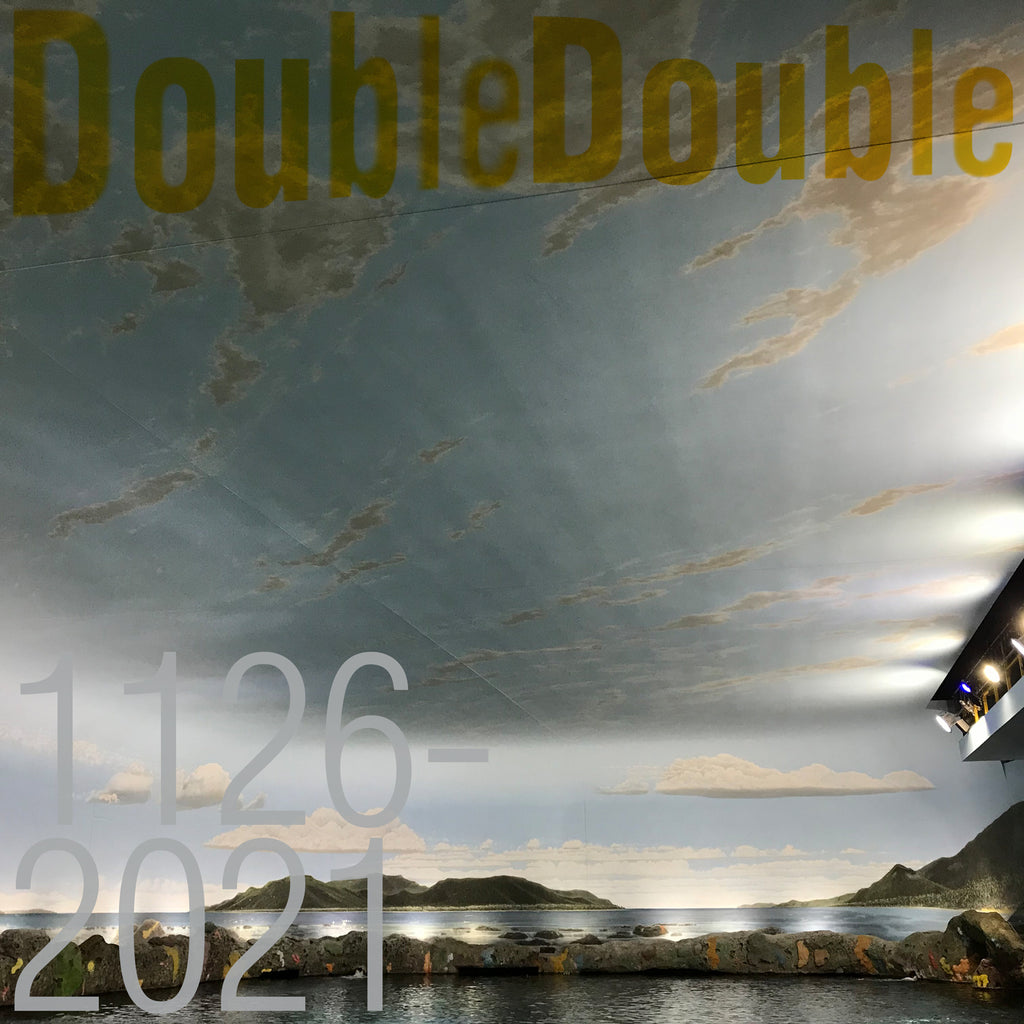
Published since 2002, an Ocean and Pounds publication

The Photograph
coordinated by Kamelia Pezeshki

From the series “Pahlevan Never dies” (“Pahlevanan Nemimirand”), Jahan Pahlevan by Semco Salehi
Illustration based on film and digital photography 2020

CHEEZ
by Fiona Smyth

Greenwood
by Kai Chan

Collage #2

Poem a Week
by Gary Michael Dault
Wet in the Snow
high on
a mountain
a crumpled
page
lies wet
in the snow
its message
dead
from the dark
in us

a poem
by Kam Ping Hing 金炳興
回歸
當我們回歸之前,別無選擇
歷史的來路如去路,歲月的容顏
依然蒼白,世紀的虛飾
全匯集到這一角荒城
當我們摸索,驚愕於多方的不定
但見矮簷下瑟縮的一群
相對無言,冠冕下積壓了多少傴僂
存在和不存在,究有何分別
偉哉!這夕陽掩映的市廛
繽紛的繁華,燦爛奪目
追逐的身形,交纏折疊
譜下了這一代匆忙的痕跡
而弦歌未盡,燈舞未熄
迷醉的夢,夜夜編織
當我們妥協,捐棄一已的尊嚴
徘徊在每一扇深鎖的重門
期望鈴聲傳遞輸誠的意願
深巷裡,流浪的脚步沉重如昔
儘管有人提醒我們,血脈縱使相連
信念終將在斑斕的山影埋葬
風暴等待我們,如同鬼魅
入夜,有哭聲自陰喑的四壁襲來
呵!大地的蟲鳥究為何奔馳
設若今宵,濱海渡頭不期相逢
訴罷衷情,復又哄笑如孩提
縱未屈服,亦將以狂狷代替麻木
而金陵依舊,漢水依舊
期盼春汛,年復一年
初稿 1951

photograph by Lee Ka-sing

DOUBLE DOUBLE issue 1126-2021
View Current Issue
https://oceanpounds.com/blogs/doubledouble/1126-2021
CONTENTS: Lee Ka-sing: Eight pieces of 8x10 Polaroid / Holly Lee: Sketches from my iPhone VII (What was he thinking)

Taking Notes
by Jeff Jackson

“ Street Musician “, Bloor and Bathurst, Toronto, 2019.

Caffeine Reveries
by Shelley Savor

From the Notebooks (2010-2021)
by Gary Michael Dault

From the Notebooks, 2010-2021.
Number 113: Two Moons with Ragged Cup (November 20, 2021)

Leaving Taichung Station
by Bob Black

Winter Snow, slightly leaning
tock, tap
and then you rose slipping up upon the air
as a snapping desiduous caught in the tongue of a November updraft,
sound splintering and thoughts specking
as the rain transformed to white song
teethed downward toward the ground:
there go the thoughts, there rain'd the touch, there raced the tail of some coppery such twig.
Winter calling you across the globe, dreamsong.
But now
what to do with the creek in my neck
the cringe stiffened from watching skyward,
as a meerkcat in defense of the sky,
Suricata suricatta,
surrender when the strain comes not from vanity
but from the only thing that made sense:
the defied.
You defied gravity and pulled me kiteward and made sure i felt accumulated there:
In the vein of the crook of an aging ligature
in the wash of fractals and limbs,
our heart drifting over the land, the dead and the living,
left, right and the slightly leaning
we,
a flurry of blanket white, souls ondinging,
digging out from the sky's traveling,
the skift scattering, a speed boat traveling in stealth
neve, known and our cornsnow joining, winged
Away,
the day and all of what you have spun
and all of what you have penned.
And we race snow-pawed toward a thawing heart
Amend.

Aotearoa
by Madeleine Slavick 思樂維

red asterisk

ProTesT
by Cem Turgay


Travelling Palm Snapshots
by Tamara Chatterjee

Canada (November, 2021) – Arriving late afternoon; I was drawn to the museum's exterior gardens. Roaming around, I felt the surroundings reminiscent of a Cristo installation. It was a small moment of joy prior to the fantasy of modern architecture and ancient texts waiting inside.



Lee Ka-sing's book CODA is now available in ebook format
(ebook edition for Desktop computer, iPad, Android devices and Kindle)
US$4.99
Published by XPIA, order and download directly from BLURB -
https://www.blurb.ca/ebooks/767271-coda-ebook
coda 終章, a suite of 227 photographs by Lee Ka-sing. CODA was created in the Fall of 2020, for the exhibition “On the Brink of Borrowed Time: To Stay / To Flee”.
In this exhibition 12 visual artists were invited to dialogue with 12 writers. Ka-sing decided to use BOOK as a medium for the exhibition. It was a response to Leung Ping-kwan’s poem “Cloud Travel” written in 1981.
Organized by The House of Hong Kong Literature, the event was taken place at the Pao Galleries of the Hong Kong Arts Centre from October 30 to December 6, 2020.
The first edition of CODA was published in September 2020, 8x10 format, softcover, 480 pages, available as print-on-demand. This ebook edition is based on the second edition published in February 2021. The edition includes an article written by Holly Lee on CODA.
CODA is also available as print-on-demand edition
8x10, 480 pages, softcover, perfect binding
CAN$150
https://www.blurb.ca/b/10605321-coda

Seeing CODA
written by Holly Lee
When Ka-sing started to gather vocabularies from his past photographs, to compile and portray a hefty volume of poetic images dedicated to Hong Kong, I was curious about the weight of the project, taking into consideration the present antagonistic climate there, it would, undoubtedly, not towards the light.
He calls it CODA, a visual poem.
CODA has a colour, or two. The word, first of all, is assigned the Pantone colour of a slightly reddish - the lighter grey 409. Actually, I would hesitate between 409 and the deeper grey 410. I cannot pinpoint the exact colour because colours look inconsistent under different light sources. I am now sitting underneath a narrow, long bank of LEDs, which give out a warm yellowish light. When I walk over to the big window, with a lot of daylight flooding in, I might have to choose another number of grey, say 431. Now we consider the next part, the background colour, where the alphabets are set upon. Normally I would call it a very dull dark blue. How dull? the Pantone 539? No, it looks too primary. I would perhaps mix a slightly purplish blue 2965 with a medium grey 430. Again all these are just to give you an idea of the cover design of the book Ka-sing calls CODA, which by this time, you’ve already got a sense of no matter how free flowing and open the work seems to be, still contains sentiments of fairly unbearable weight.
Ka-sing is the kind of person who talks little, but stays in focus. He could listen to Beethoven’s symphonies many times over without being bored. When I raised a surprise look at him still listening to the same play list weeks ago, he’d say, “This is a version by another conductor, a different orchestra.” I agree that he will always find something new, or a different interpretation in the same piece of music, but I also believe that the emotion, rhythm, ebb and flow in the musical language must have played an important part in influencing him, paving him the way to compose the work, fully informed by his photographs, as an unabbreviated visual experience, emerged new, as a narrative, a sensorial alternate form, a symphonic poem that one listens with the eyes.
I had an indescribable feeling, almost overwhelmed with emotions when I first saw CODA on the computer screen. A body of 227 images, set in a slow-moving temple which would take about 20 minutes to sit through. A meditation. A slow down of a hurried life. For certain, having sat patiently and gone through the twenty minutes visual epic, anybody would feel, or even be touched by one thing or the other, and despite their vastly different circumstances, some images are always universally understood and resonant with. That’s the beauty of the work. You cannot help but echo with some of the images you’re drawn to, there is a sense of familiarity, something long hidden in the secret corners of the mind that lure you step into their shadows…
The first image in CODA is a stunning fuzzy impressionistic black and white shot from Kowloon overlooking to Hong Kong Island, vaguely visible as mountains of lights. It starts with the celebration of the first night after the 1997 Handover in July. A night drizzling with light rain but nevertheless fireworks were still shooting off to light up the sky. The action was spontaneous, the photographer a wandering soul, following and searching the moods of the city. The image, like everything else, was never meant to be clear. The second shot shows a seemingly melt-down clock, which haunted me immediately as an object found after explosion, which then pursued by a sort of whirlwind, a quiet round object with pencil marks to a wreath of barbed wire twirled in the air, like a crown of thorns. The poetics of the images are so strong, we are being led into the dark wood round and round, sometimes quiet, smooth, sometimes rugged, dense and impenetrable.
Next we’re ushered in pictures showing old, rephotographed negatives, perforated film strips that recorded images visually and mentally invoke sound vibrations, striking different cords in our hearts. Following pages of texturing and layering we are slowly entering Hong Kong life in the 80s and 90s, the rose garden, memories of the lives of glamours celebrities and common folks, arrows always asking the question come or go, this way or that way. And, trailing behind so many staircases, steps, writings and layerings of events the city comes to reveal itself - a wet football field, skyscrapers, trees, roads, grids in myriad forms. Sometimes it feels like a prison one needs to break out. But there are more knotted roots, more entangled wires and obstacles. Is that the state of mind of the artist?
Perhaps it means what it means. CODA is a soft sigh exhaled gently to something past. A good-bye (again) to a close friend and the city they both left behind. It is a dialogue and a funeral song - something that’s so frequently heard in Mahler’s symphonies. The famous Adagietto in his Fifth, a love song replete with the yearnings of living and the inevitability of dying. In making CODA, Ka-sing deliberately converted most of the colour photographs into black and white, with just a few exceptions - the colour he still sees and ingrained in his memory, the photograph “I promise you a rose garden”, which he created as an editorial assignment for a magazine in 1990. Hong Kong, seven years into heading back to the hands of China, was full of optimism and a number of mega constructions were being proposed. They called it the Rose Garden Project. The future looked rosy, thus the title Ka-sing gave to his picture, not without skepticism. Today we are still intrigued by the thought and the picture, even so the sky has already turned grey; the promise, like the magnificent, breathtaking cloudscape, remains but a scene, just flew past the window of an aeroplane.
Can you live in the clouds, beautiful as it is, asked Ping-Kwan in his poem. Ping-Kwan was thinking about temporal, terrestrial and earthly matters at the time when he wrote the poem in 1981. He was seeing his city distancing, disappearing under the clouds after the plane took off. Or, perhaps he was suggesting more? Forty years later, Ka-sing responded with CODA, his jolts of feelings largely expressed through images, his love and memories of the vanishing city, a melancholic departure that lingers like a slow, at times turbulent tune that keeps looping itself - a mirage of desire, a smoke screen to despair. This city, often considered, undermined as transient, has become indispensable, a home resides faintly in the heart. CODA is but another chapter, a book made after another book in the same year*. The end shot is a small Big Bang. The ending is another beginning.
*Lee Ka-sing domestic-life-colour-book was made prior to CODA. It was made during the lockdown months of Covid in 2020 (with touches of optimism and a lot of colours). Unlike coda, which recycled old images, all 227 images in domestic-life-colour-book were new. The book has 480 Pages, the same number of pages and images as in CODA. As Ka-sing puts it, a duo.

MONDAY ARTPOST
ISSN 1918-6991
Published on Mondays, with columns by Artists and Writers
Published since 2002, an Ocean and Pounds publication
mail@oceanpounds.com
mondayartpost.com
Click here to Subscribe





